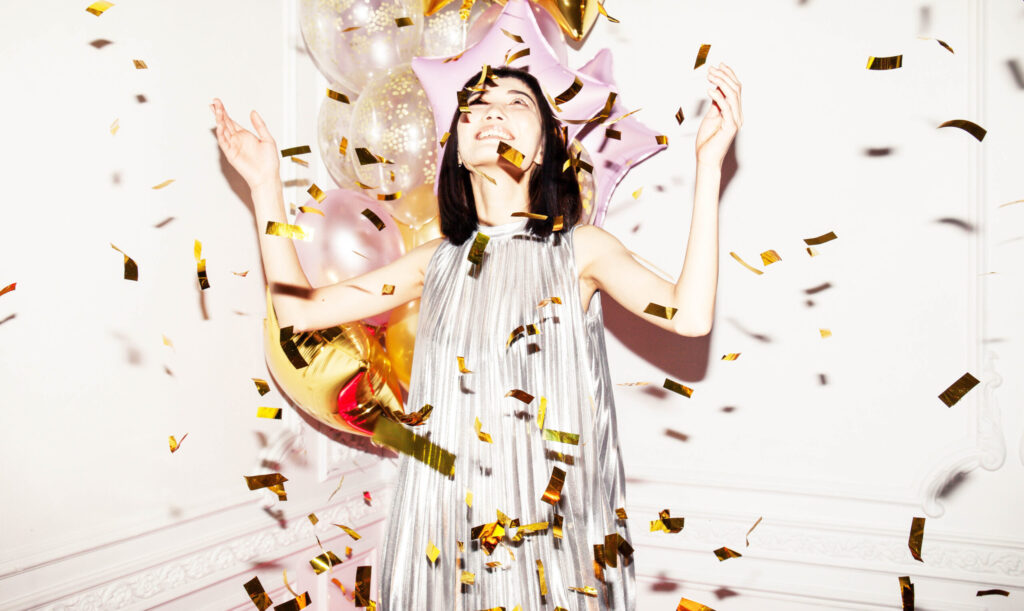
New Year, Same Pajamas: How to Have a Cozy and Comfy New Year’s Eve at Home… or Not!
New Year’s Eve is often associated with loud parties, crowded bars, and extravagant celebrations. Staying home and having a low-key New Year’s Eve can be just as enjoyable and fulfilling.
In fact, post pandemic, many people are choosing to stay home and avoid large gatherings. New Year’s Eve can be a great way to recharge, reflect, and focus on personal growth. It can also relieve the pressure to have a perfect or exciting night out, allowing for a more relaxed and authentic celebration with friends.
If you’re staying home on New Year’s Eve, you can still do plenty of fun and festive activities to celebrate the occasion.
Here are some ideas:
- Host a virtual party with friends and family over a video call.
- Have a movie marathon with your favorite films or TV shows.
- Cook a special dinner or order your go-to takeout.
- Play board games or card games with those in your household.
- Create a DIY photo booth with fun props and take silly photos.
- Write down your resolutions or goals for the upcoming year.
- Watch the New Year’s Eve countdown and fireworks on TV.
- Have a dance party with your favorite tunes, or try a new workout routine.
- Start a new hobby or work on a DIY project.
- Read a book or listen to an audiobook.
- Make homemade cocktails or mocktails.
- Have a spa night with face masks, bubble baths, and relaxation.
- Write letters or send cards to loved ones.
- Practice gratitude by reflecting on the past year and what you’re thankful for.
- Watch online performances or concerts.
Enjoy this 9 hour mix of the hottest musical artists around!
Did you know?
In the city of Akita, Japan, there is a tradition called “Namahage,” where men dressed in demon costumes visit houses on New Year’s Eve, scaring children and reminding them to behave well in the upcoming year.
The tradition is meant to drive away evil spirits and bring good luck and prosperity to the household. Young men from the community typically play the Namahage characters, and the practice has been designated as an important intangible folk cultural asset in Japan.
A little history:
The celebration of New Year’s Eve is a tradition that dates back thousands of years. The earliest recorded New Year’s festivities were held in ancient Babylon around 4,000 years ago. The Babylonians celebrated the beginning of the new year with a 12-day festival called Akitu, during which they crowned a new king and promised the gods to repay their debts and return borrowed objects.
 The practice of celebrating the New Year on January 1st dates back to the Roman Empire, when Julius Caesar introduced a new calendar called the Julian Calendar in 45 BCE. Before this, the New Year was celebrated on different dates in different regions and cultures.
The practice of celebrating the New Year on January 1st dates back to the Roman Empire, when Julius Caesar introduced a new calendar called the Julian Calendar in 45 BCE. Before this, the New Year was celebrated on different dates in different regions and cultures.
In medieval Europe, New Year’s Eve was known as “Silvester,” named after Pope Sylvester I, who died on December 31st in 335 CE. The tradition of ringing bells at midnight on New Year’s Eve originated in Italy during the Renaissance and soon spread to other European countries.
The modern commercialization of New Year’s can be traced back to the 1800s when businesses began to recognize the potential profits of the holiday. In the late 1800s, retailers started advertising New Year’s sales, and restaurants began offering special New Year’s menus.
New Year’s Eve became an official holiday in the United States in 1904, when New York began hosting a massive celebration in Times Square.
 The holiday became more widely celebrated and commercialized as transportation and communication technologies improved. Television played a significant role in promoting the commercialization of New Year’s.
The holiday became more widely celebrated and commercialized as transportation and communication technologies improved. Television played a significant role in promoting the commercialization of New Year’s.
Broadcasts of New Year’s celebrations, such as the ball drop in Times Square, became popular, and companies began advertising their products during these broadcasts.
People worldwide celebrate New Year’s Eve in various ways, from watching fireworks displays to attending parties or celebrations of loved ones and making resolutions for the upcoming year.


